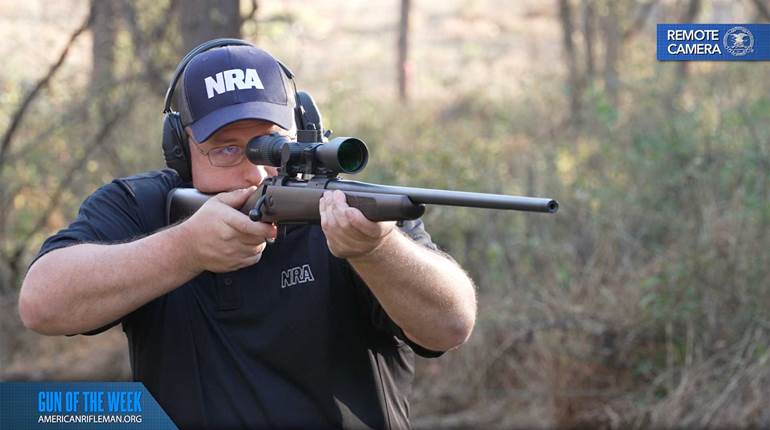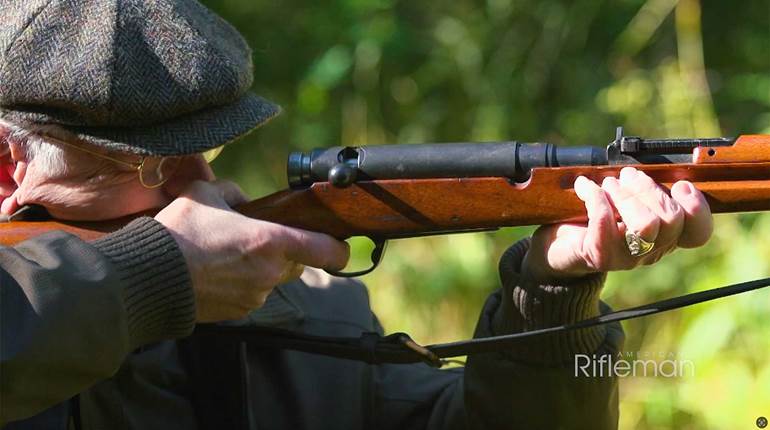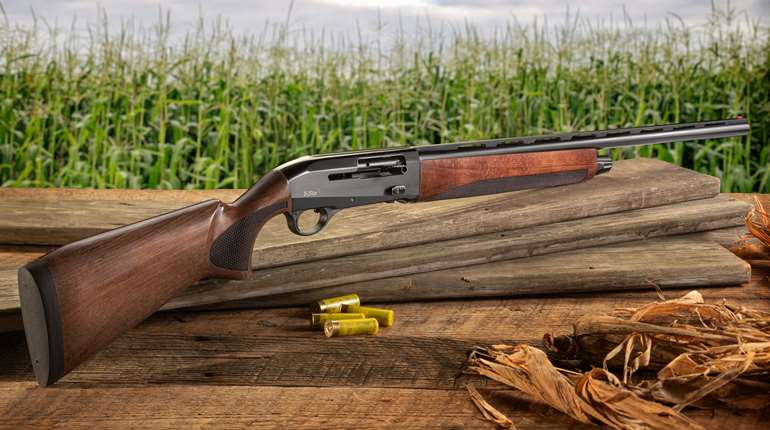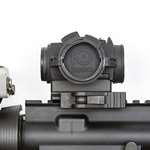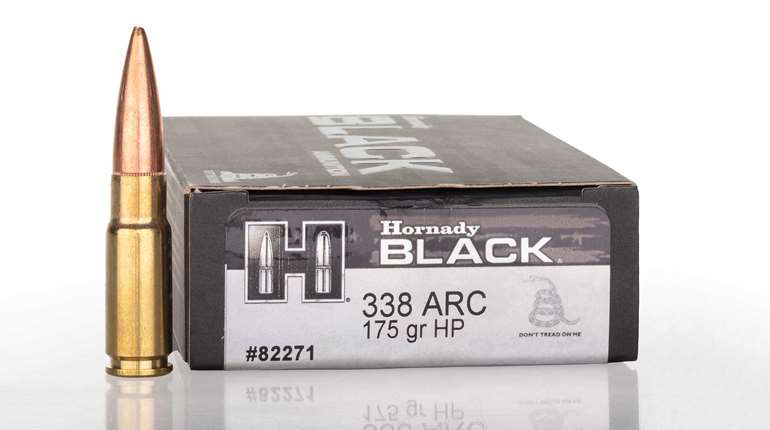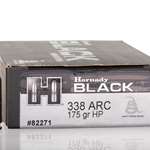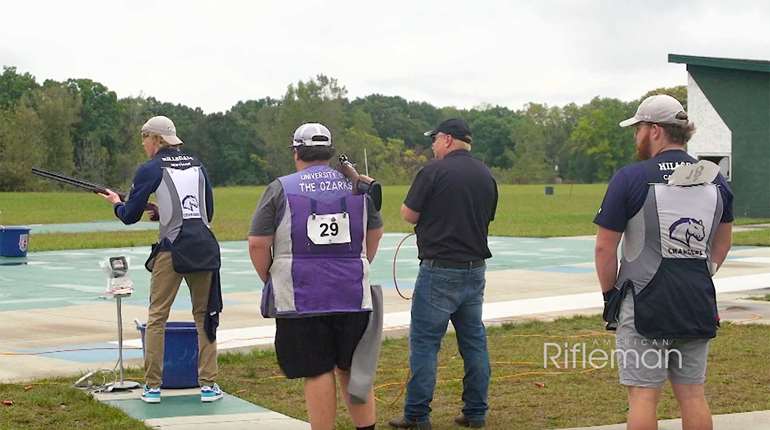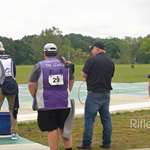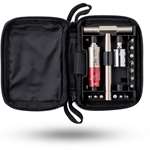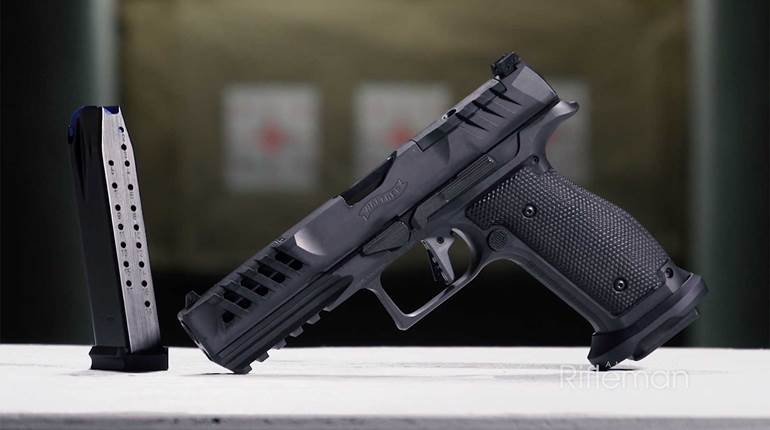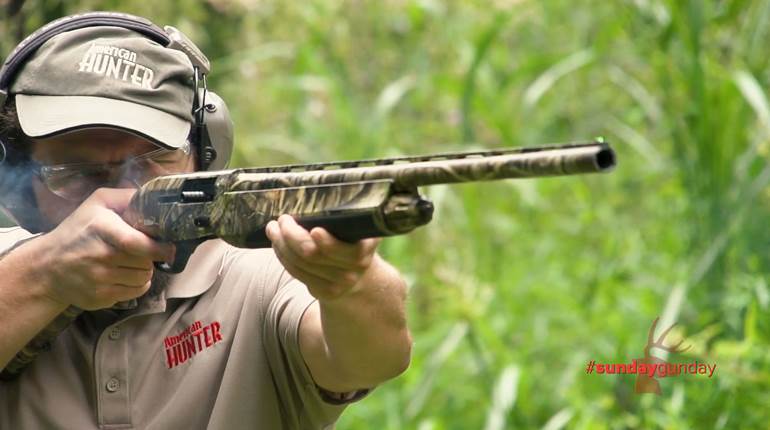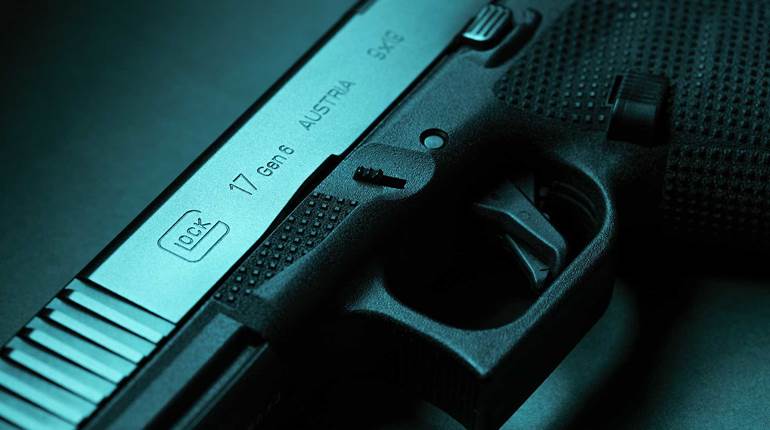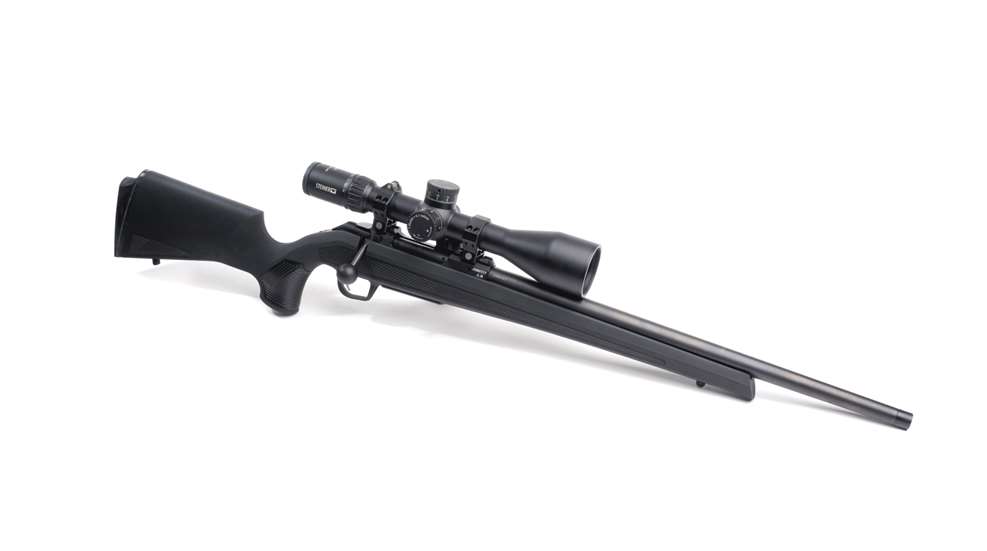
I’m an unabashed fan of CZ. My daily carry gun is a CZ 75D PCR, and was a CZ P07 before that. My main carry optics competition gun is a CZ P10F with a Trijicon SRO. There’s just something about this Czech company and its products that speaks to me.
If you aren’t familiar, CZ stands for Česká Zbrojovka, which roughly translates as "Czech Armory." They’ve been in the arms-manufacturing business in their current location of Uherský Brod since 1936. Most American shooters are familiar with the CZ 75 series and its derivatives due to their fantastic ergonomics and great performance. They may be less familiar with the myriad of other firearms like the Bren semiautomatic rifle, the Scorpion pistol caliber carbine or CZ’s shotguns.
One of the guns I always had an eye on, but never got around to buying, was the CZ 527. Introduced in 1990 and a favorite amongst enthusiasts, the 527 was based on the classic controlled feed Mauser action and came in a variety of cartridges. I had in mind that I wanted one in 7.62x39 mm and could use it as a lightweight bush rifle to accompany me on outdoor adventures.
To my disappointment, CZ discontinued the 527 line in 2021. Around the same time, the company announced a new line of bolt-action rifles dubbed the CZ 600. This new line was a blank-sheet redesign of a bolt action rifle to meet the needs and wants of the enthusiast market across hunting and target shooting alike.

The CZ 600 Platform
So what was it about the CZ 600 that had everyone so excited? There were several key features including adjustable triggers, 60 degree bolt-throw and threaded muzzles. The “big deal” was the interface between the receiver and the barrel. Unlike most bolt-action rifles on the market, the CZ 600 took a note from modern semi-automatic rifles like the AR-15 where the bolt lugs interface lugs inside of the barrel unit itself.
In contrast, with traditional bolt actions, the bolt lugs rest against abutments machined into the receiver. Gunsmiths time the barrel to present just the right amount of engagement where the cartridge fully locks into the chamber and the bolt lugs hold against the receiver abutments.

Why does the way CZ did it with the 600 matter? There are two big benefits. If the hard steel of the barrel takes the brunt of the recoil force from the lugs, then CZ could make the rifle’s receiver out of lightweight aluminum. That helps cut back on weight, which contributes to ease of carry.
Furthermore, and perhaps most exciting, this arrangement meant that the barrel and bolt are naturally headspaced and you could swap barrels (and calibers) easily without needing a gunsmith at all. Swapping a barrel on the CZ 600 means sliding the unit into the receiver, and then tightening two heavy crossbolts on the underside. These clamp down and hold everything in place.
Unfortunately, there was a safety recall in 2022 along with a “stop use” order about this feature. With the original design, it was possible for someone not properly following the instructions to install a barrel incorrectly and allow an out-of-battery discharge. CZ issued a recall, and removed the user-interchangable barrel feature by applying a strong threadlocker to all rifles, going forward.

This year, in 2025, CZ has re-engineered the design and brought back the user-interchangeable barrel within the new CZ 600 Plus series. I expect that this new design will populate its way into the existing lineup and eventually replace it.
All that said, the rifle I’m looking at for this review does not have the new features and still has the previous install mechanism. The CZ 600 comes in a few flavors for the American market to address different segments.
- CZ 600 Alpha: “Do-All” utility rifle with an aluminum receiver equipped with integral machined rails for scope mounting, polymer stock
- CZ 600 Lux: Hunting rifle with a steel receiver, fiber optic iron sights, European-stye walnut stock, and threaded holes for scope base
- CZ 600 American: Hunting rifle with steel receiver, threaded for scope mounting, no iron sights, American-style walnut stock
- CZ 600 Range: Competition-oriented, steel receiver, threaded for scope mounting, no iron sights, laminate stock
- CZ 600 Trail: Compact backwoods companion with an aluminum receiver, integral scope mount, aluminum chassis with telescoping stock, and controls drawn from the Bren 3 semi-automatic rifle
Each of these come in a variety of calibers fit for purpose. The Trail model only comes with a “mini” receiver, so it is limited to .223 Rem, 7.62x39 mm and .300 BLK.

For testing and evaluation, CZ USA sent over a CZ 600 Alpha model in .308 Win. So let’s dig in.
The CZ 600 Alpha
Out of the box, the CZ 600 Alpha looks clean. The black polymer stock has strategically placed rubber inserts for improving traction and comfort when holding the rifle. There are sling swivel attachments both fore and aft on the underside. A thick pad at the rear of the buttstock offers plenty of “squish” for recoil management. While comfortable, the stock’s fore-end displays a good bit of flex, and I was easily able to make it touch the barrel, though this didn’t seem to affect the accuracy results.
The machining of the anodized aluminum receiver and integral rail looks great. Since the receiver is a lightweight aluminum, the balance point of the rifle shifts a few inches in front of the magazine well.

The muzzle of the 20” barrel is threaded 5/8x24 TPI, and CZ included a polymer thread protector. Working back from there, the hammer-forged barrel is a semi-heavy profile, tapering down to 0.72” just behind the muzzle protector. The barrel is nitrided for environmental protection.
I found the straight bolt handle and knob to present a modern “all business” vibe that I appreciated. The knob is comfortable, easy to grab and never gave a hint of wobble. The bolt itself is interesting, too. The .308 Win model sports six locking lugs placed in two rows. The head is also removable, contributing to the ability to swap calibers down the line.The bolt body itself is steel, and fights tightly into the receiver.
The single stage trigger is also fantastic. Out of the box, I measured it with a Wheeler digital trigger gauge and it averaged 1 lb., 6.6 ozs. over 10 trigger pulls. The trigger pull-weight is user-adjustable via a small hex screw just in front of the trigger shoe. Rather than being a smooth turn, it actually clicks to one of four different settings. Indicated by a series of dots, the available pull weights for the single-stage trigger are: 1.4 lbs., 2 lbs., 2.5 lbs. and 3.1 lbs.

As for other controls, CZ took a slightly unconventional approach. I’m accustomed to the bolt release for fieldstripping being on the left side of the receiver. In the CZ 600’s case, it’s on the right side, just in front of where I would normally expect to find the safety.
The two-position safety is also different, and CZ placed it at the rear of the receiver tang right in the middle of the rifle so it’s accessible to either hand. You activate the safety by pushing up on the checkered button from the underside of the stock, just behind the trigger guard. This locks the bolt in place as well. To deactivate the safety, you push down from the top.
CZ 600 Magazine
The CZ 600 Alpha came with one polymer five-round magazine. The magazine sits nearly flush with the stock. The magazine release is a slightly recessed button in front of the magazine well. CZ’s magazine is proprietary, and they do sell larger 10-round magazines for those who want them for competition purposes.

The magazine is also notable because it’s a double stack design that you can feed from the top while it’s inserted into the rifle. I found this feature incredibly convenient compared to other magazine-fed bolt actions on the market. I measured the interior overall length (OAL) of the magazine at 3.03”.
Controlled Feed & Ejection
One of the big features of the CZ 600 is its “hybrid controlled feed.” CZ markets this as having the benefits of both push feed and controlled feed. The latter being desirable among dangerous game shooters and advocates of the “practical rifle” disciplines.
As you move the bolt forward, it strips a fresh round from the magazine. With the CZ 600, the round doesn’t fully pop clear of the magazine until the cartridge is already about half way into the chamber. As you push the cartridge all the way in, the claw-type extractor grabs a hold of the rim. On a true Mauser-type controlled feed, like the old CZ 527, the round is controlled as soon as it leaves the magazine, so the CZ 600 is a bit different there, as you actually have to push the bolt all the way forward before the round is fully controlled.
But, unlike push-feed rifles, the extractor controls the round before you ever lock the bolt handle down. So if you don’t lock the bolt handle down and instead pull it back out, the round comes back out with it. In contrast, if you feed the round and fail to lock the bolt on a traditional push-feed rifle, then pulling the bolt back out means the round stays in the chamber.

Another benefit of controlled feed is ejection. With push-feed rifles, the ejector is spring-loaded and putting constant pressure against the back of the case. When you pull the extracted case clear of the chamber, the ejector flings it out of the gun as soon as the case mouth clears the receiver. On the CZ 600, we again have a bit of a hybrid. The ejector is in the bolt face, like a push-feed rifle, but it actually has spring tension in the opposite direction pulling it away from the case.
The bolt stop in the receiver serves a second purpose here. It fits into a groove machined along the bottom of the bolt body, which then leads to the ejector. As you cycle the bolt to the rear, the back of the ejector bumps up against this bolt stop. Continued pressure overcomes the spring tension and allows the ejector to poke through the bolt face and push the cartridge out of the bolt head. Doing this slowly means the case trickles out over the side of the rifle right next to you. Doing it with gusto leads to flinging the case through the air well clear of the gun.
This is what CZ meant when they developed a “hybrid” system.
Testing At The Range
For evaluation, I mounted a Steiner P4xi 4-16X 56 mm scope on top using a set of Hawkins Precision 34 mm rings.

Testing took place on a humid summer day in Glengary, W.Va. The temperature at 10:30 a.m. at Peacemaker National Training Center was 81 degrees. The humidity was 77 percent. I brought along three loads for evaluation: Fiocchi Hyperperformance 175-grain Sierra Match King hollow point boat tail (HPBT), PMC X-Tac Match 168-grain Open Tip Match (OTM) and Igman 147-grain Full Metal Jacket (FMJ).
For velocity results, I fired 10 rounds of each cartridge in front of a Garmin Xero C1 Pro radar chronograph positioned about 12" to the right and 10" behind the muzzle. For accuracy, I fired five groups of five rounds for each load at 100 yards. I had the rifle supported on a Caldwell Tack-Driver shooting bag up front and a small bag at the rear.
The Fiocchi Hyperperformance proved to be the winner of the day with both the most consistent velocity (standard deviation of 14.1 f.p.s.) and the smallest average group of 1.16”. It also printed the smallest group overall at 0.92”. The PMC X-Tac Match wasn’t far behind, however.
For a rifle coming in at an MSRP of $649 as of this writing, I think these results are perfectly acceptable.

Shooting Impressions
Once finished with velocity and accuracy testing, I moved down the line to shoot at steel plates spaced out to 300 yards. Once the initial excitement of watching a .30-cal. bullet create a massive plume as it impacts steel swingers subsided (well, let’s be honest, that never gets old), I focused on how the rifle felt.
In all, I think the CZ 600 feels great. My only minor complaint came down to cycling the bolt. Compared to other rifles I’ve shot, the bolt feels stiff to move back and forth and close on a chambered round. Perhaps this is due to the six recoil lugs, or the controlled feed mechanism, but it was definitely notable.

The hybrid controlled feed allows single feeding rounds by dropping them loose on top of the magazine, but I had to employ some finesse by moving the round back towards the bolt face first. Without doing that, it was 50/50 whether I could get the round to feed all the way and chamber. Feeding from the magazine was no issue, and it fed perfectly fine from there. As a note for future users, I suggest taking advantage of the ability to feed the magazine from the top while it’s in the gun for single loading.
With ejection, I was able to modulate how far the rifle threw brass on ejection via how quickly and powerfully I cycled the bolt to the rear. Going nice and slow, I could bring the spent brass out of the chamber, all the way to the rear, and then “bump” the handle back just a bit to actuate the ejector and have the brass tumble out the side of the action. Going full speed, I was throwing brass a good seven feet to my four o’clock.
Final Thoughts
I have to admit, I’m impressed with what CZ has done with the 600 series. It’s accurate, has a great trigger, and incorporates the controlled feed elements in a way that I’m shocked nobody else has done before. It just … works.
In the back of my mind, I want to turn one of these into a lightweight competition rig, shooting something like 6 mm ARC.
That brings us to the rub. There is not a great amount of aftermarket support for the CZ 600 at this time. Very few companies make stocks, and nobody seems to make a competition-style chassis for it. The inability for the shooter to swap out barrels and cartridges on their own when that was supposed to be a standout feature is a real bummer for a perpetual tinkerer like me.

I hope that CZ’s introduction of the 600 Plus series, which brings back the user-interchangeable barrels, reignites the momentum for the rifle, because there’s a ton of potential for it to be a great enthusiast’s rifle.
That said, if you aren’t the kind of person who wants to constantly tinker with different cartridges, stocks and chassis systems, then my complaints above don't matter. The CZ 600 comes in all of the most popular calibers already, from .223 Rem. to .270 Win. and .300 Win. Mag., so there’s something for most people at a great starting price. To that end, I think this might be my new favorite suggestion for someone just looking to grab a rifle and use it from time to time.
CZ 600 Alpha Specifications
Importer: CZ USA
Action Type: bolt-action, repeating, centerfire rifle
Chambering: .308 Win.
Receiver: aluminum; anodized black finish
Barrel: 20" cold-hammer-forged steel, black nitride; 5/8x24 TPI muzzle
Rifling: four-groove, 1:10" RH twist
Magazine: five-round detachable box
Sights: none; integral Picatinny rail
Trigger: single-stage, adjustable; 1-lb., 6.6-oz. pull
Overall Length: 40.16"
Weight: 5 lbs., 14 ozs.
MSRP: $649













